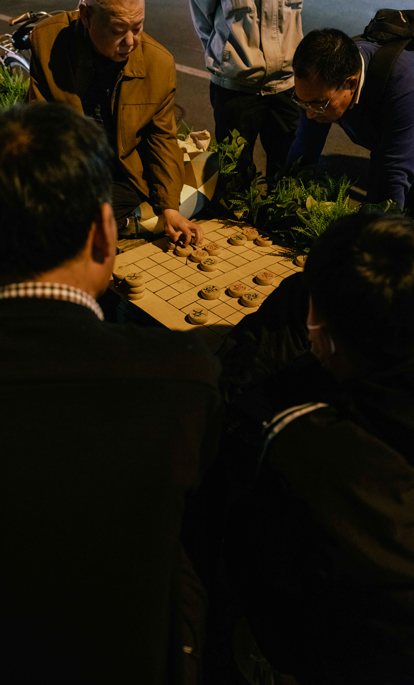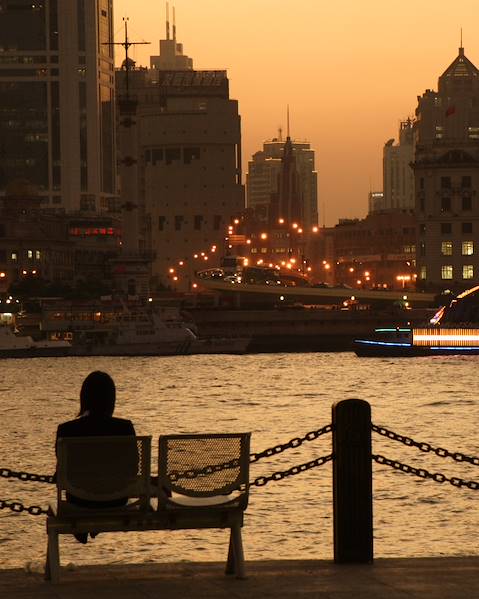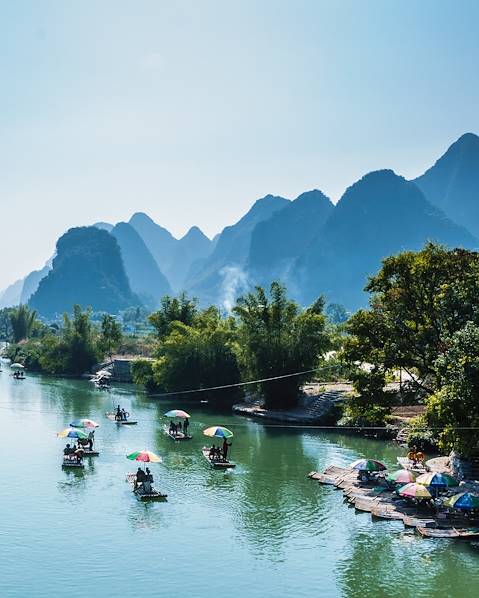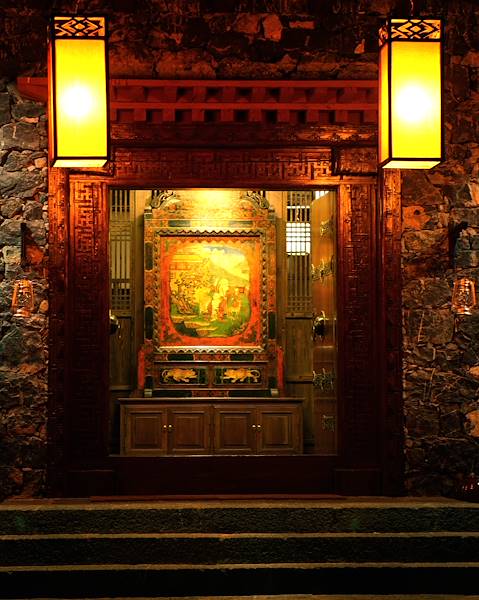As one of the biggest countries in the world, China covers a whopping six percent of the world’s land mass and has multiple climates. Some of the southern areas have a subtropical or even tropical climate, while regions in the north have subarctic climates – confusing, we know, and it doesn’t end there. Monsoon season plays a key role when deciding when the best time to visit China really is, along with the country’s varied topography of mountain peaks, plateaus, forests and desert. Spring and Autumn are generally the best seasons to head to this vast and diverse country, but depending on where you go, winter and summer can bring their own joys. To help you decide when you’d like to travel to China, read on for our guide to the country’s different regions.
Hong Kong
This bustling metropolis has a subtropical climate with four distinct seasons. Spring falls between March and May, when temperatures are between 17 and 26°C on average, and the air is humid. Because spring is low season, it’s a great time to visit the city’s museums, galleries and exhibits, but be sure to pack a range of clothing for the unpredictable weather. The summer months of June, July, August and September are hot, sunny and very humid. This is when the city experiences showers, thunderstorms and even typhoons. When it’s not raining, however, there are plenty of outdoor activities on offer, including sunbathing on the beach, kayaking and hiking. Autumn (October to November) is one of the best seasons for visiting Hong Kong, when you can enjoy mild temperatures somewhere between 19 and 28°C, along with low humidity and plenty of sunshine. In winter, average temperatures are between 15 and 20°C, though it’s not uncommon for them to drop to around 10°C. This is also a great time to visit the city, with plenty of festivals and celebrations to keep you entertained and give you a real taste of local culture.
Southern China
Encompassing Hong Kong (which we’ve already dealt with) along with regions like Macau and Hainan, southern China is the warmest and wettest part of the country, with a tropical climate in the extreme south. The hottest and wettest months are between June and September, when temperatures can surpass 40°C, and the humidity can become oppressive. Between June and August, typhoons, cyclones and heavy rains are frequent (these months see 12 inches of monthly rainfall on average). The weather is drier after October, and winter temperatures are milder than elsewhere in the country. The best time to visit China and its southern provinces is between October and March, when the weather is cooler, sunny and dry. If you’re planning to hit the beach, however, Spring is a good time to head to Hainan, as rainfall is still fairly low, and temperatures are around 20°C.
Beijing and Northern China
Northern China has four distinct seasons and significant temperature fluctuations – summers are very hot, and winters are very cold. Between December and March, average maximum temperatures are below 10°C (in January, Beijing’s maximum temperature is just 2°C) and mornings can drop to -15 or even -20°C. But before you write winter off completely, these colder temperatures also come with drier and sunnier days, making it the perfect season for those seeking cooler temperatures and fewer crowds. Beijing experiences long hot summers with daytime temperatures reaching over 40 degrees and heavy rainfall. In northwest China, temperatures climb even higher, and monsoon activity peaks in July and August. The most pleasant times to visit Beijing and northern China are spring (April and May) and autumn (September and October), both of which are dry and mild with temperatures ranging between 20 and 30°C.
Shanghai
China’s biggest city is a rich multicultural hub of business, education, art and architecture. With a humid subtropical climate, it has four seasons and an annual rainfall level of 47 inches. Spring is between March and May, when the temperature is around 15°C and rainfall is moderate. Summers are long, hot and wet, so prepare for temperatures of over 40°C, sudden downpours and typhoons between June and September. The best time to visit the city is during Autumn, which occurs between October and November. Expect sunnier and drier weather along with the chance to try Shanghai’s famous hairy crab, a seasonal speciality. Winters are cold and dry, but not quite as biting as in Beijing. In the coldest months of January and February, temperatures average between 0 and 8°C.
Sichuan
This large province has several geographical areas, and just to confuse you, they all have different climates. The high southern mountains have an alpine climate, while the surrounding valleys have a distinct dry season (between October and April) and a distinct rainy season (between May and September). To avoid the heaviest of the rain but still catch some rays, visit southern Sichuan’s most popular destinations, such as Lugu Lake and Panzhihua, between mid-March and mid-May, or late September to early November. In the high plateau of the west, winter is long and summer is cold, but there’s plenty of sunshine throughout the year: around 2,500 hours (the UK gets around 1,400 hours a year, for comparison). Autumn is the perfect time to visit Sichuan’s western destinations like Jiuzhaigou Valley and Huanglong, when nature’s colours are at their most vibrant. Sichuan’s eastern basin is so famously cloudy and foggy that it’s the basis for a Chinese idiom, ‘in Sichuan, dogs bark at the sun’. Summers are warm (between 21 and 30°C) and winters are cold (2-10°C), though they’re perfect for trying out China’s largest snow mountain skiing resort, located in Chengdu.

















